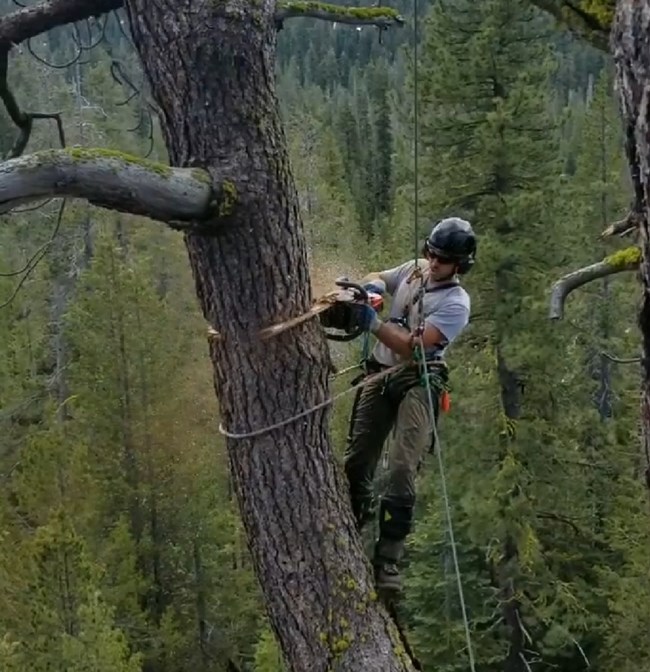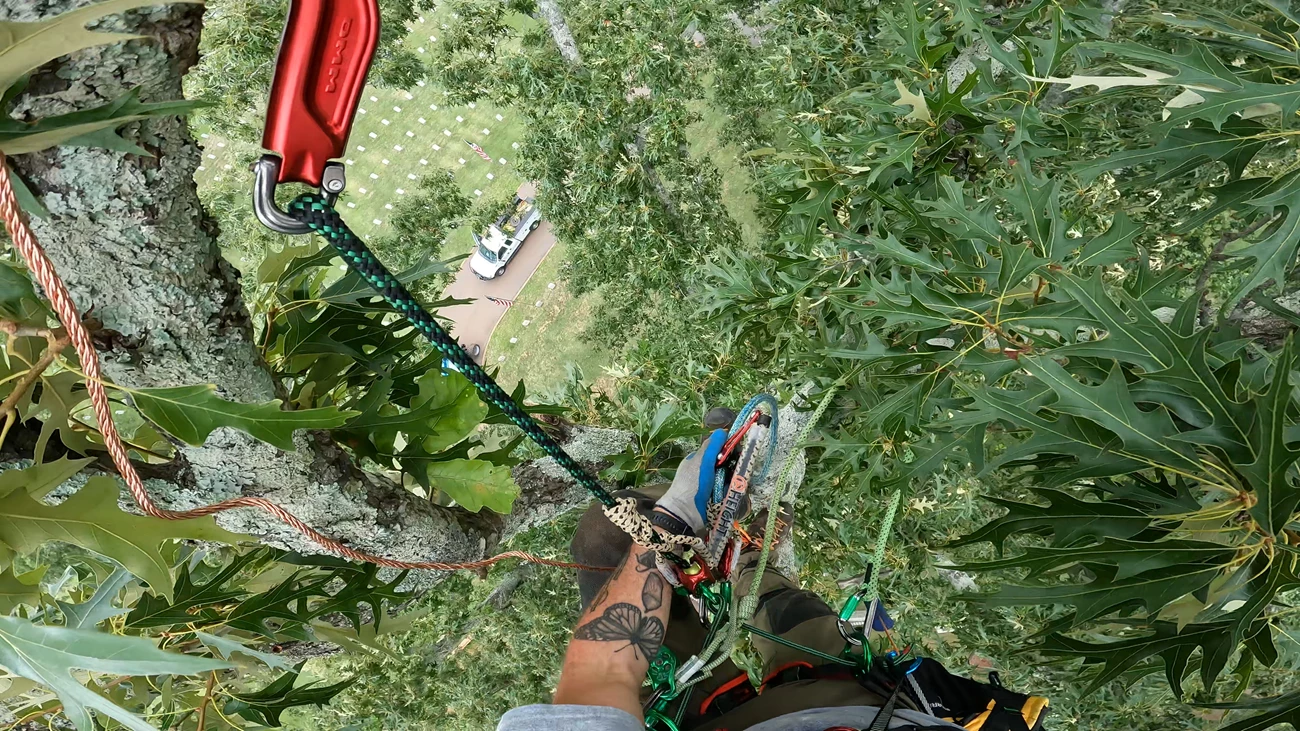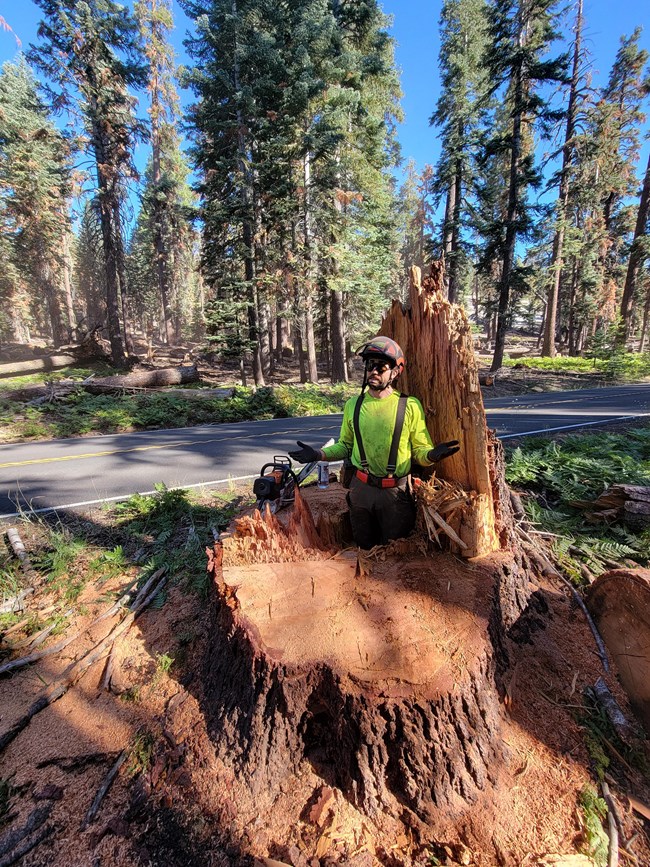Last updated: April 21, 2025
Article
Branching Out: The Vital Role of an Arborist in Preserving Our National Parks
The Spark: What initially drew you to the field of arboriculture, and how did that journey lead you to working for the National Park Service? Were there any specific moments or experiences that solidified this path for you?

NPS
Protecting History, Branch by Branch: We saw you expertly installing lightning protection on a mature tree at Shiloh. Can you explain why this kind of work is so vital for the National Park Service, especially in a place with such historical significance? How does protecting individual trees contribute to the larger mission of the park?
There are so many reasons we want to protect individual trees! In our heavily managed landscapes (cemeteries, housing units, visitor centers, picnic areas, campgrounds, etc.) trees are at the crossroads of all kinds of different management focuses. Of course we value a tree as a natural resource, but they have impacts on:
- Facilities and infrastructure
- Public safety, wildlife, cultural resources
- Sustainability
- And of course, public enjoyment and aesthetics.
When a mature tree dies or is damaged, it can often set off a chain reaction of impacts that a park is left to deal with. Benjamin Franklin said, “An ounce of prevention is worth a pound of cure.” As the park service, we manage irreplaceable historic and cultural resources. I will do everything within my skillset to help in the effort.

NPS
A Living Legacy: What does it mean to be involved in projects that directly preserve the natural heritage of a site while also addressing practical needs like cemetery space? Can you walk us through the process and the significance of ensuring the "legacy" of a historic tree lives on?
More Than Just Climbing Trees: What are some of the less obvious or perhaps surprising aspects of being an arborist for the National Park Service? What skills or knowledge beyond tree identification and climbing are essential for success in this role?

NPS
A Day in the Life: Could you paint a picture of a typical day (or perhaps a particularly memorable day) in your work as an arborist for the NPS? What are some of the challenges and rewards you experience?

NPS
For the Love of Parks: What is the most rewarding part of contributing your arboricultural expertise to the National Park Service? What keeps you passionate about this unique line of work?
The trees and the people. I really love trees LOL. I’ve had the pleasure of working on multiple state champion trees and unique trees all over the country. After a decade of full-time arboriculture, I’m still blown away by them.
Meeting people across the NPS and helping them achieve their goals with trees. The NPS is filled with employees who really care about these places and stories, I get to meet them and contribute to their efforts.
